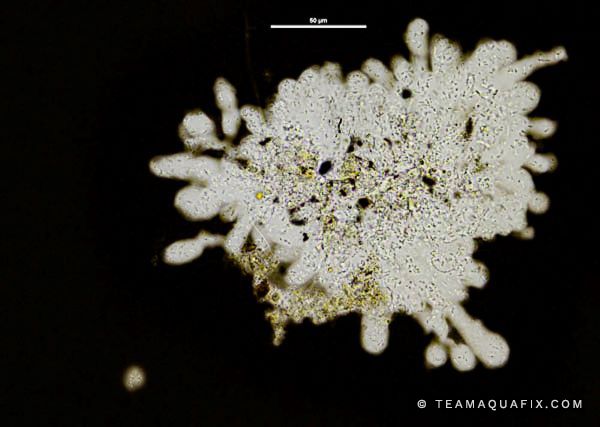
If high levels of soluble BOD, low levels of easily degraded nitrogen, and healthy D.O. concentrations are present, zoogloeal growths can rapidly uptake the BOD and produce slime. This slime can then lead to foam formation and poor dewatering properties.
To treat zoogleal growths, the addition of an easily degraded nitrogen supplement such as Accelerator 7 helps to prevent high EPS generation and favors the growth of other floc-forming bacteria. If you are concerned about your plant conditions contact a technical rep for information and recommendations.
Zoogloeal growths (such as Zoogloea) are a category of bacteria that use soluble carbon to produce high levels of extracellular polymeric substances (EPS) and usually produce a capsular EPS structure. EPS protects these growths from stress, such as toxicity, and concentrates food sources when food is low. These growths do not blend well with other floc-forming bacteria and form isolated colonies or stick to the outside of floc. They are easily distinguishable under phase contrast and have an EPS structure that is easily visible after India ink staining. Zoogloeal growths are either amorphous or finger-shaped. Both types are common in wastewater treatment plants in low levels, however, high levels can lead to sliming, foaming, and/or bulking. Zoogloeal growths prefer high levels of soluble BOD in order to thrive in a wastewater system. If there are low levels of soluble BOD, sliming will not occur. If high levels of soluble BOD are present, zoogloeal growths can rapidly uptake it and produce its characteristic EPS slime. This sliming can then lead to foam formation and poor dewatering properties.
An apple juice wastewater treatment plant had its aeration basin turn into a slime pit. This plant treats waste with high sugar and low nitrogen: zoogleal growth-favoring conditions. In addition, this system had high fluctuations in pH which encouraged the growth of Zoogloea-like organisms because of their protective capsular EPS structure. A combination of these factors caused this system to select for a culture of nearly pure zoogleal growths, which wrecked havoc on their aeration basin. In this case, we recommended mechanically removing the slime as well as the addition of Accelerator 7 to help regrow a healthy bacterial population.

39041 RGE RD 283,
Red Deer County, AB T4E 0M2
Phone: 1-888-466-0031 |
Fax: 1-888-507-9716
To place an order, please fill out the required fields below and proceed to checkout. Ensure all information is accurate, and feel free to contact our support team if you have any questions or need assistance. Thank you for choosing us!